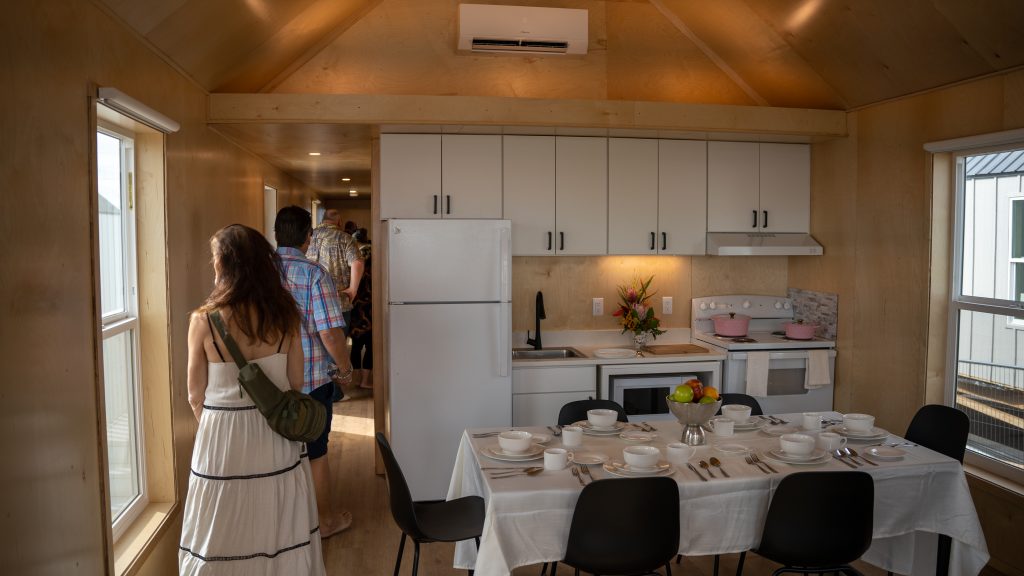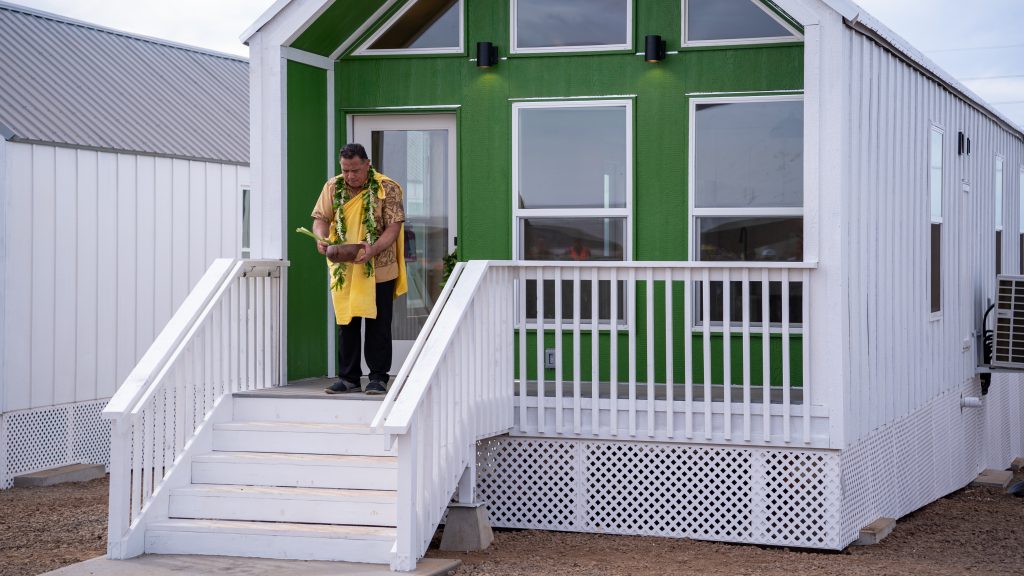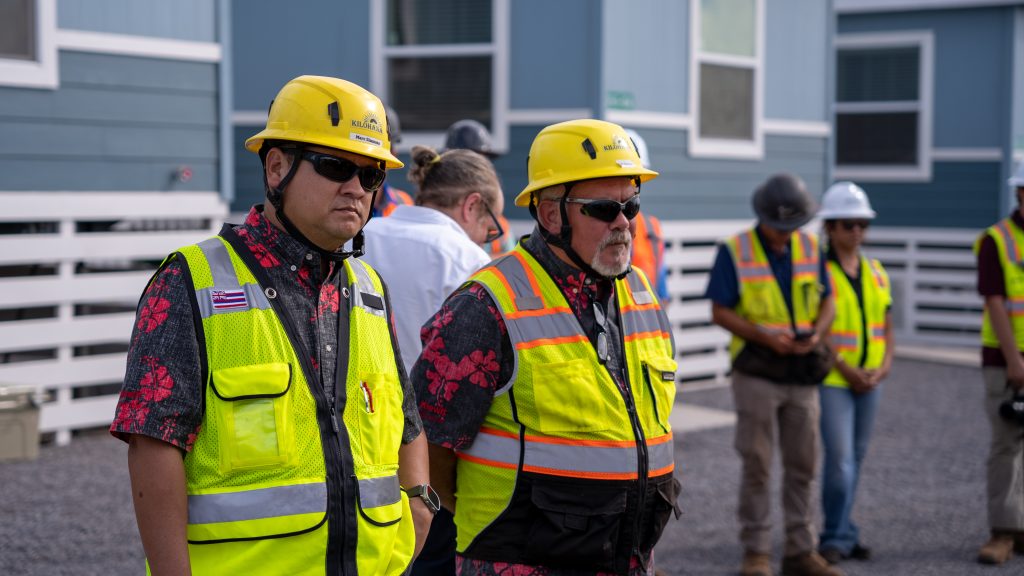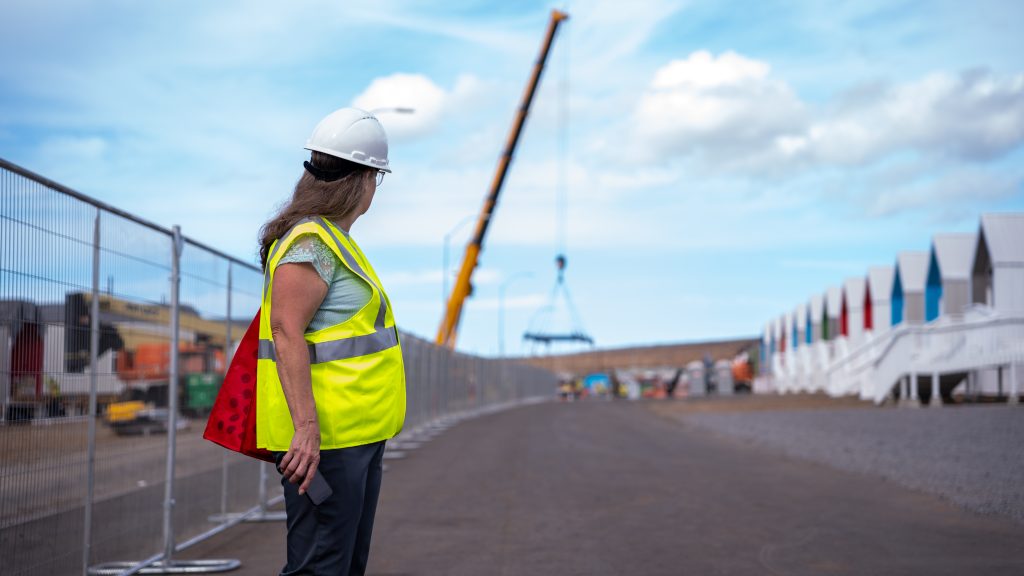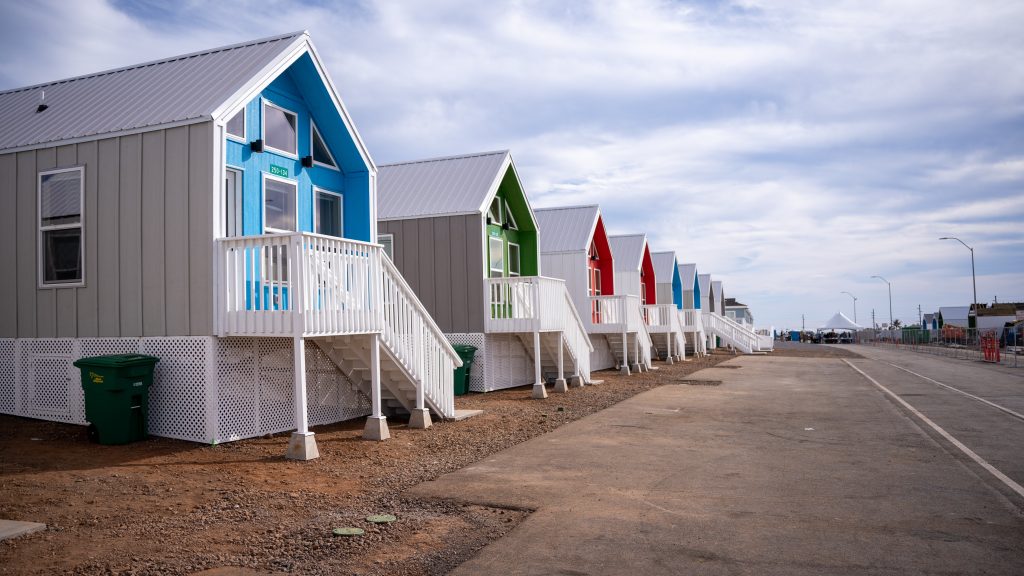First family moves into FEMA’s Kilohana Group Housing after Lahaina wildfires
The Folaumoeloa family became the first tenants of the Federal Emergency Management Agency’s Kilohana Group Housing on Friday, a long-awaited milestone for Ane, Lafaele and their three children. It marked the end of a nearly 15-month wait since the wildfires of Aug. 8, 2023, destroyed their Lahaina home, along with about 4,000 housing units.
Like many Lahaina residents, the Folaumoeloa’s have spent the past 15 months living in hotel rooms. The family first went to Papakea Resort in Kāʻanapali, a hotel taking survivors and later participating in the emergency shelter program managed by the state and the American Red Cross. After the Red Cross program ended, FEMA moved the family into the Royal Lahaina as part of its Direct Federal Assistance sheltering program.
Although they were relieved to have the continued shelter and proximity to the children’s school, the Sacred Hearts temporary school, their children longed for a place where they could ride their bikes again. Their mother looked forward to having stove so she can prepare the family’s favorite dish, corned beef lau lau.
After months of uncertainty, a traditional blessing ceremony welcomed the family of wildfire survivors into a three-bedroom modular unit on Friday afternoon.
When the doors opened, the eldest Folaumoeloa girl did what any older sister would—she claimed the top bunk as her own. From the master bedroom window, Ane spotted something familiar outside: her aunt’s property. She looks forward to having a front-row seat to watch the progress of its rebuild.

It marked a homecoming to Lahaina for the family, who have called the west side home for 40 years. They had lost their rented home on Komo Mai Street, along with all their belongings.
The blessing, which took place just days before Thanksgiving, resonated with West Maui County Council member Tamara Paltin. “Being able to cook Thanksgiving dinner in your own home is a form of mental health care,” she said.
Paltin also emphasized that there is more work to be done. “We can’t forget the people that are still waiting, still struggling to get back home.”
About 12,000 people were displaced from the Lahaina wildfires that killed at least 102 residents on Aug. 8, 2023. More than 14 months later, 116 permits have been issued and one Lahaina home has been rebuilt, while roughly 1,200 remain on FEMA’s Direct Lease Program.

“Let’s take these blessings that we have and just pay it forward, because our community is stronger together, and we don’t want to leave anybody behind,” said Paltin.
The council member equated long-term affordable housing to suicide prevention, at a time when 988 Lifeline call rates on Maui have risen 41% since the wildfires.
“While disasters may test our resolve, they cannot weaken our commitment. FEMA is here to stay, to listen and to help. Together we are building more than just temporary housing for fire survivors; we’re building a foundation for resilience, recovery and renewal for the people of West Maui, so that they could come back together as a community.”
FEMA Region 9 Administrator Robert Fenton
Culmination of a historic, year-long project
The Kilohana Housing Group was the first time that FEMA has built temporary homes — known as Alternative Transportable Temporary Housing Units — that meet local and international building codes.
Ninety-four furnished units had been delivered to the site at Fleming Road and Malo Street as of Nov. 18. According to FEMA Regional Administrator Robert Fenton, contractors continue to experience delays related to sourcing concrete for foundations. He says FEMA expects to have the remaining modular units in place by the end of January 2025.
Once completed, the housing site will offer 167 temporary homes to support survivors of the Lahaina wildfire as they rebuild their lives and work toward securing permanent housing.
Kilohana includes utilities, trash service, postal service and a shared laundry facility. The sewer line installed, in addition to serving the modular homes, spans an additional 20 residential lots makai on Fleming Road.
FEMA assigned the housing mission to the US Army Corps of Engineers (USACE) on Oct. 28, 2023. USACE developed site plans and were responsible for contracting site preparations that began on May 6, 2024. Contractor Aktarius, LLC dba Dawson AKT installed the infrastructure necessary to place the homes. The site was turned over to FEMA on Oct. 25, 2024.
FEMA procured the 167 modular units from three different vendors: Dynamic, Timberline and Acuity. Units were manufactured and assembled in the Continental United States and then shipped to Maui.
The units are prefabricated, furnished one-, two- or three-bedroom units designed to meet ADA and UFAS requirements. Each unit is furnished with essential items like beds, dining tables, and chairs.
The 34-acre Kilohana site is located next to another temporary group housing site, Ka Laʻi Ola, developed by the State of Hawaiʻi, where the state plans to install modular units for up to 450 households.
After the temporary housing at Kilohana is no longer needed, FEMA would have the option of reallocating the units to increase Maui’s housing stock. However, infrastructure that remains behind will be available for housing development by the state Department of Hawaiian Home Lands.
Fenton told Maui Now that there currently is nothing set in stone that would take the 167 units out of Lahaina, saying there are “a lot of potential options” for selling or donating the homes to nonprofits that the county and state may consider.





